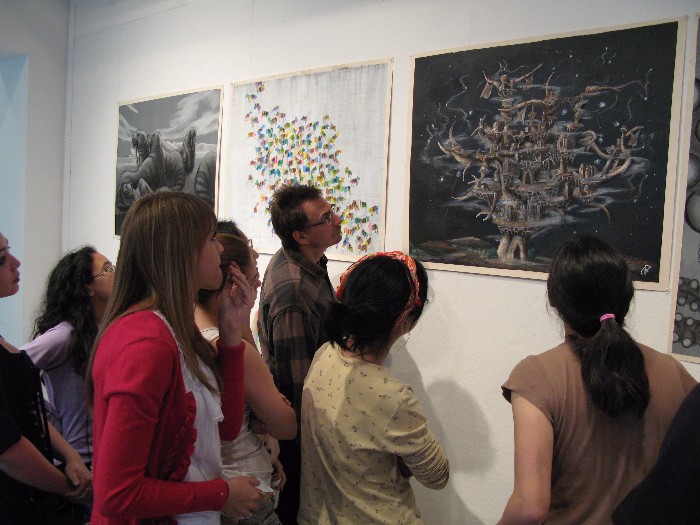 The essay is here.
The essay is here.
This is about the idea of being average. In art classes, art schools, and art departments, it’s not usual to feel average. But out in the real world, there are almost no critiques. It is entirely common to go years without any special attention being paid to your work. Many artists go their entire lives without even having a single public exhibition. The question is: how can you reconcile the fact that you are probably normal, in the statistical sense—not amazingly talented, but not untalented, not a continuous dynamo of invention, but not unimaginative—how can you reconcile that with the ambitions and hopes fostered by art schools and the art market? How is it possible to come to terms with being a normal, unexceptional artist?
One of the most difficult things about art school, and life after art school, is realizing that your work is not going to engage everyone, it won’t always turn heads, people won’t always care. At least in art classes people pay attention, but in the art world it is all too easy to be passed by: galleries are empty most of the time except at openings and closings, and the majority of artists don’t get many shows. That is why it’s especially important, I think, to ask what it means to be “average.”
This is also a teaching problem. From a studio instructor’s point of view, how can you offer students feedback that does not tacitly assume they are interested in making exceptional, stonishing, avant-garde, challenging, complex, ambiguous artworks? How, as a teacher, can you speak to students without privileging innovation, uniqueness?
 This essay is a chapter in the book Art Critiques: A Guide. The book is a comprehensive handbook for art students at all levels. It’s the only book of its kind, I think: it covers the many kinds of judgment, the formats of critiques, the history of the “crit,” the current practices in different places, the philosophy of critique and criticism, the idea of non-judgmental critiques, the problem of silent instructors, the problem of teachers who talk too much, the bigger problem of teachers who are aggressive or self-serving, the difficulty of knowing when to speak and when to let others talk, the length of critiques, the assumptions behind critiques, the space of critiques, critiques that are like battles, like trials, like medical examinations, like first dates. The book also has transcripts of actual critiques, analyzed line by line: that’s the best way, I think, to understand the assumptions instructors make, and to figure out how to take control of the often bizarre and incomprehensible things that happen during critiques.
This essay is a chapter in the book Art Critiques: A Guide. The book is a comprehensive handbook for art students at all levels. It’s the only book of its kind, I think: it covers the many kinds of judgment, the formats of critiques, the history of the “crit,” the current practices in different places, the philosophy of critique and criticism, the idea of non-judgmental critiques, the problem of silent instructors, the problem of teachers who talk too much, the bigger problem of teachers who are aggressive or self-serving, the difficulty of knowing when to speak and when to let others talk, the length of critiques, the assumptions behind critiques, the space of critiques, critiques that are like battles, like trials, like medical examinations, like first dates. The book also has transcripts of actual critiques, analyzed line by line: that’s the best way, I think, to understand the assumptions instructors make, and to figure out how to take control of the often bizarre and incomprehensible things that happen during critiques.